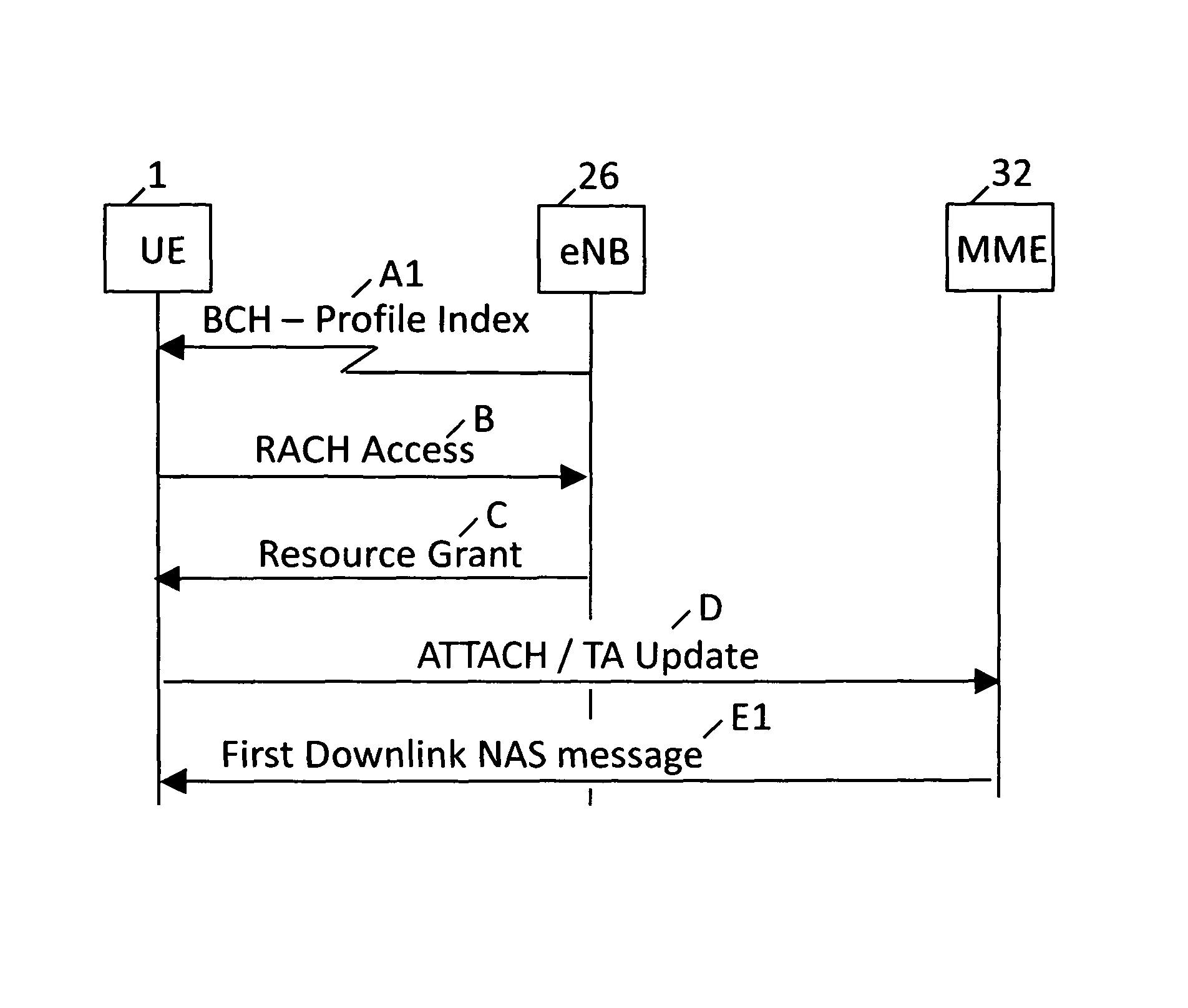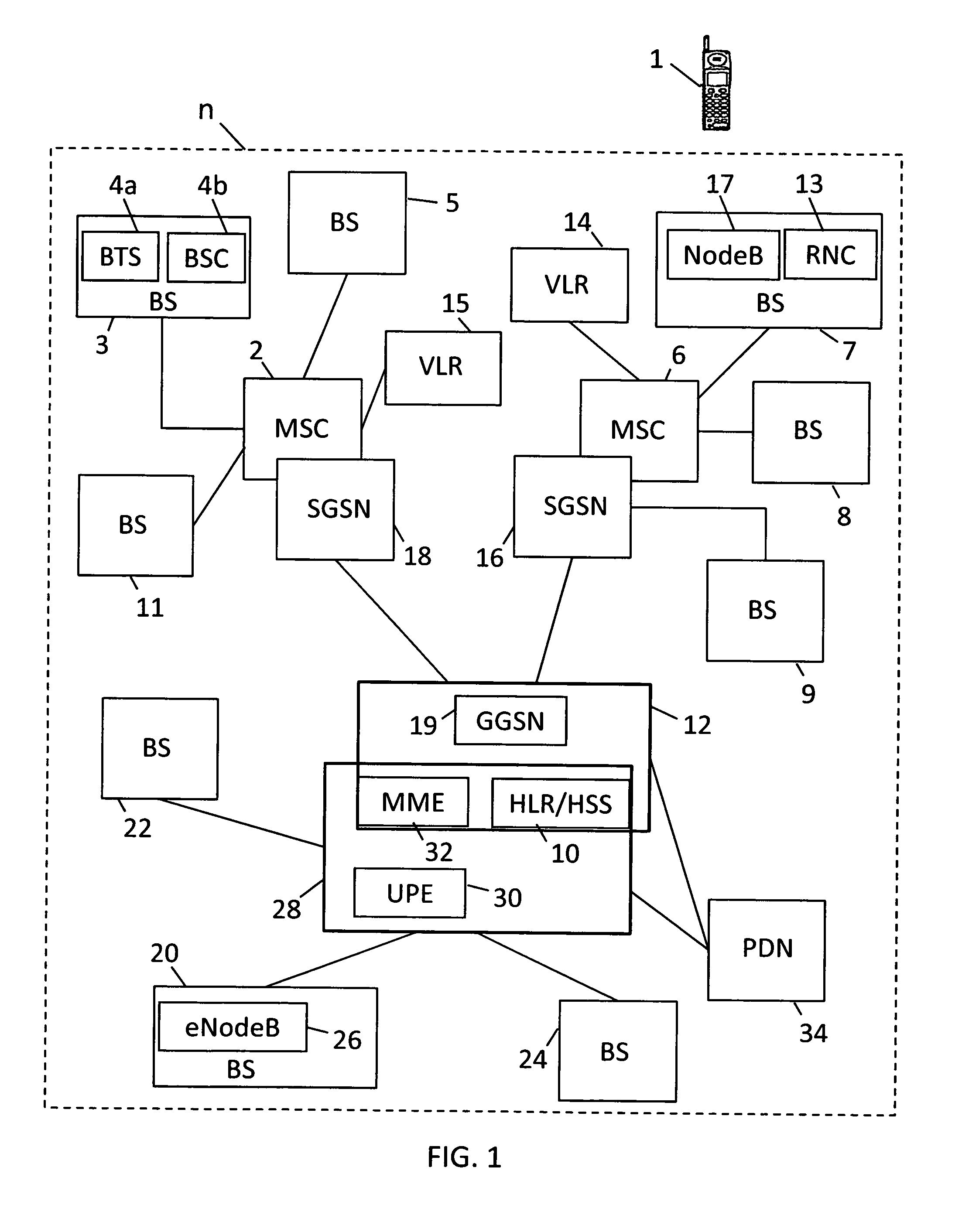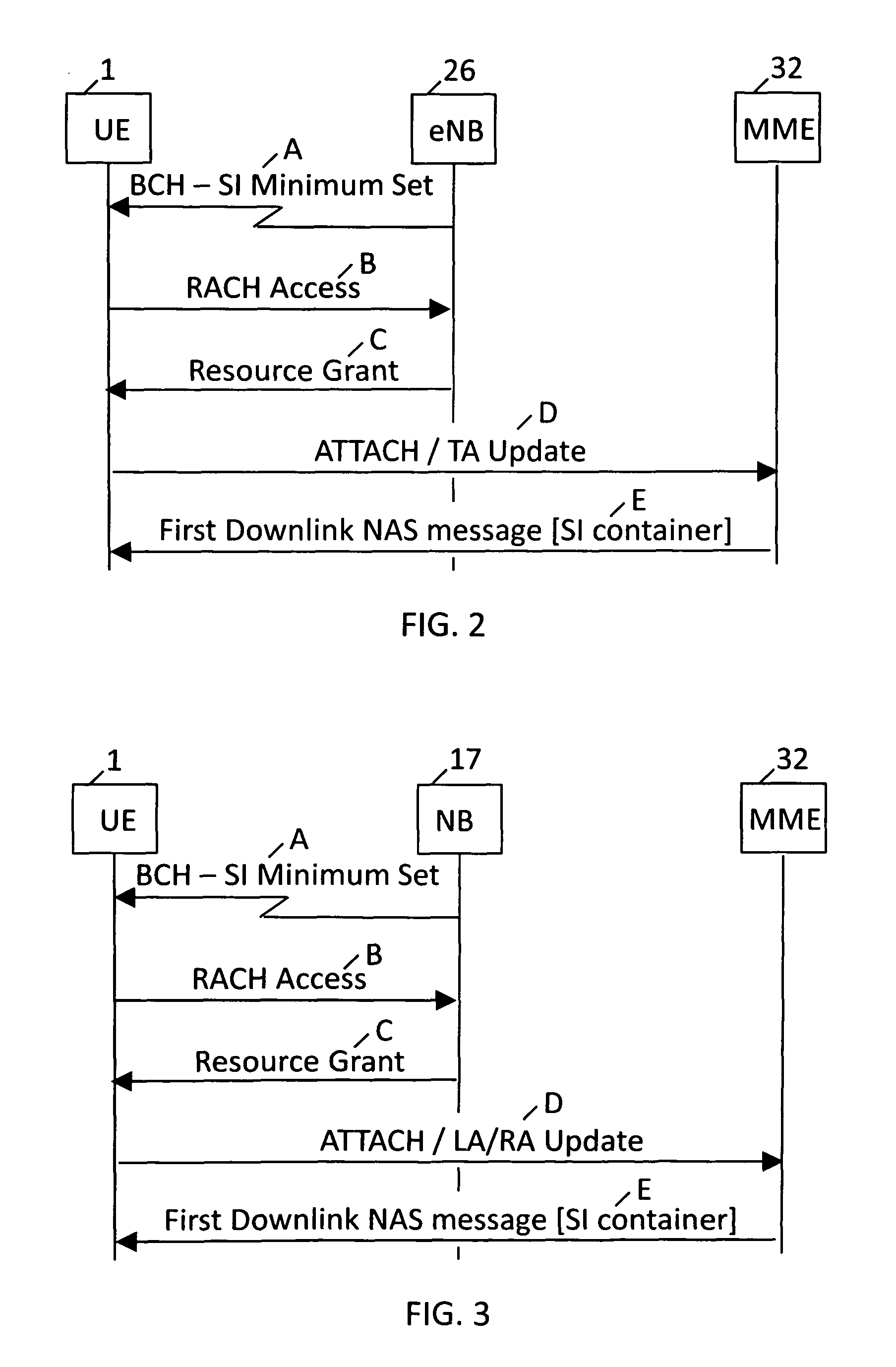Telecommunications networks
a technology of telecommunications networks and information indicators, applied in the field of telecommunications networks, can solve the problem that the system information indicator alone is not sufficient to enable the mobile to (fully) access the telecommunications system, and achieve the effect of freeing up radio capacity and bandwidth required for transmission
- Summary
- Abstract
- Description
- Claims
- Application Information
AI Technical Summary
Benefits of technology
Problems solved by technology
Method used
Image
Examples
first embodiment
[0070]the system described herein will now be described with reference to FIG. 2.
[0071]In contrast to the prior art, not all the system parameters for allowing the mobile terminal 1 to access the cell in which it is located are transmitted on the BCH. Instead, the BCH transmits (only) a system information indicator, which in this embodiment comprises a system information minimum set. The system information minimum set is transmitted by the eNode B 26 of the base station 20 that serves the cell in which the mobile terminal 1 is located, in message A of FIG. 2. This system information minimum set only includes a sub-set of the information that is conventionally transmitted on the BCH. The system information minimum set includes the identifier of the network (n), PLMN ID, and the tracking area, TA, in which the cell is located, and information to find the RACH and to configure access to the RACH.
[0072]After receiving the system information minimum set in message A, the mobile terminal ...
third embodiment
[0078]In the third embodiment the mobile terminal 1, shown in more detail in FIG. 4, includes a system information profiles store 36 which stores a plurality of system information profiles, SI 1, SI 2, SI 3, SI 4, . . . , SI n. The value (1 . . . n) following “SI” is the system information profile index number of each of the system information profiles in the store 36. The system information profiles may be stored on the mobile terminal 1 during its manufacture, or may be uploaded to the mobile terminal 1 by over the air (OTA) transmission by the system (n). System information profiles stored on the mobile terminal 1 (whether by being pre-stored when the mobile terminal is manufactured, or uploaded to the mobile terminal by the system (n)), can be reconfigured by the system operator by OTA transmissions—that is, elements of each system information profile can be varied, without necessarily transmitting the whole systems information profile. For example, any changes to the system inf...
PUM
 Login to View More
Login to View More Abstract
Description
Claims
Application Information
 Login to View More
Login to View More - R&D
- Intellectual Property
- Life Sciences
- Materials
- Tech Scout
- Unparalleled Data Quality
- Higher Quality Content
- 60% Fewer Hallucinations
Browse by: Latest US Patents, China's latest patents, Technical Efficacy Thesaurus, Application Domain, Technology Topic, Popular Technical Reports.
© 2025 PatSnap. All rights reserved.Legal|Privacy policy|Modern Slavery Act Transparency Statement|Sitemap|About US| Contact US: help@patsnap.com



